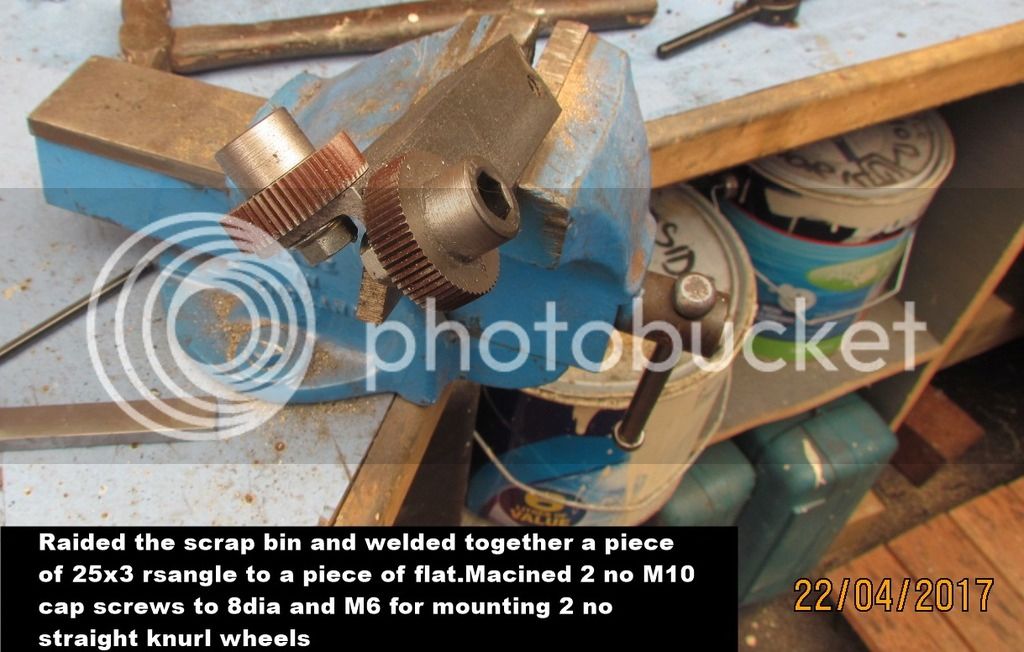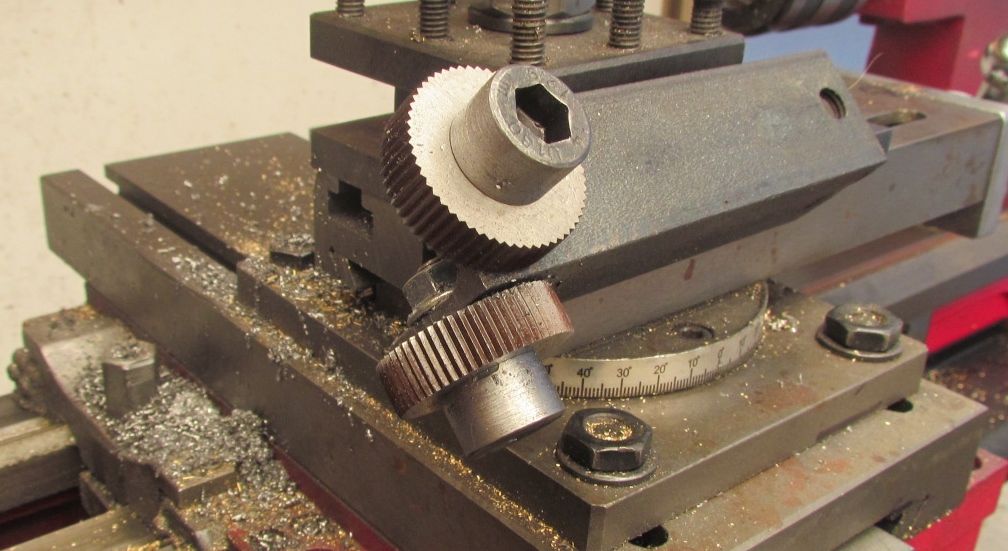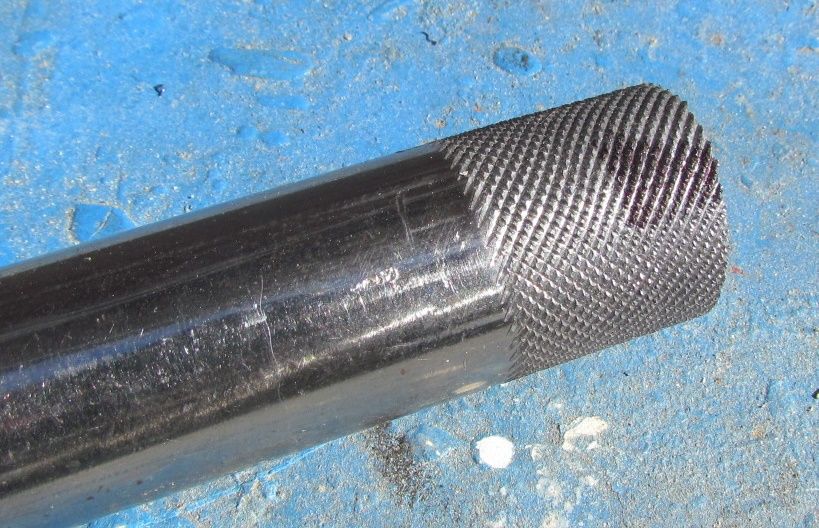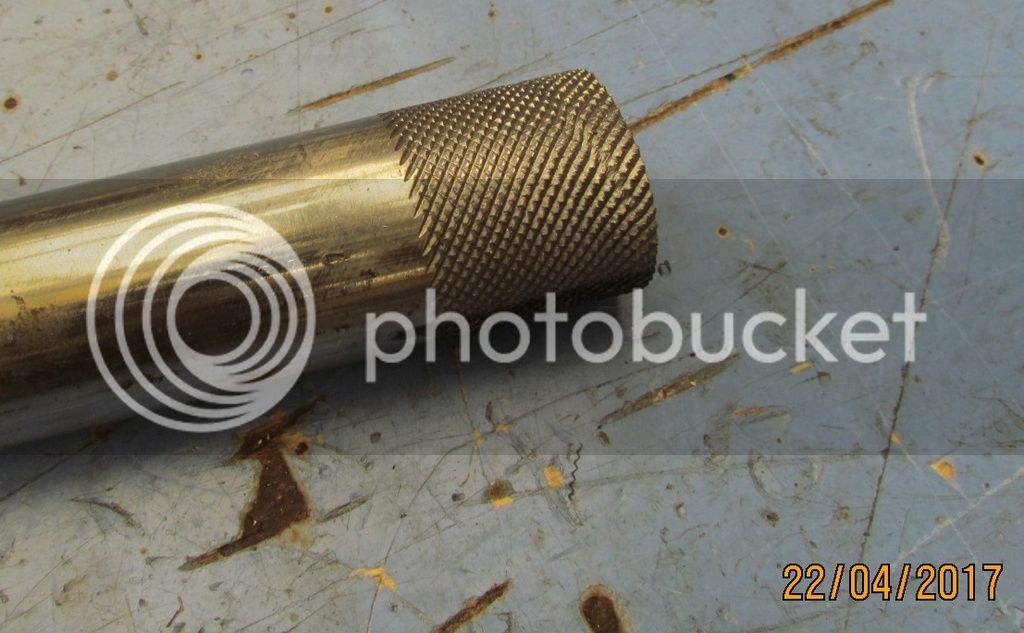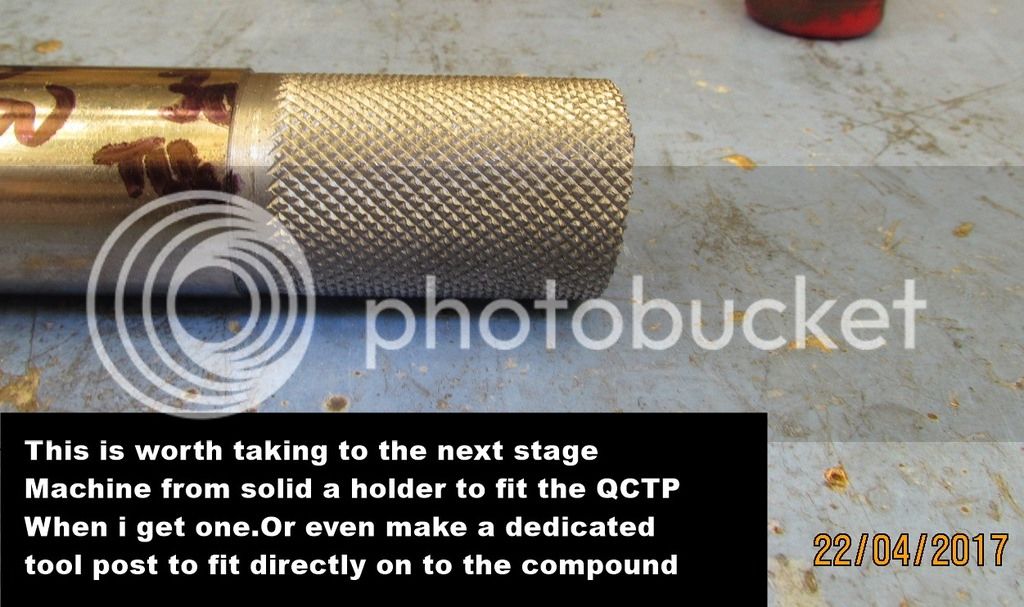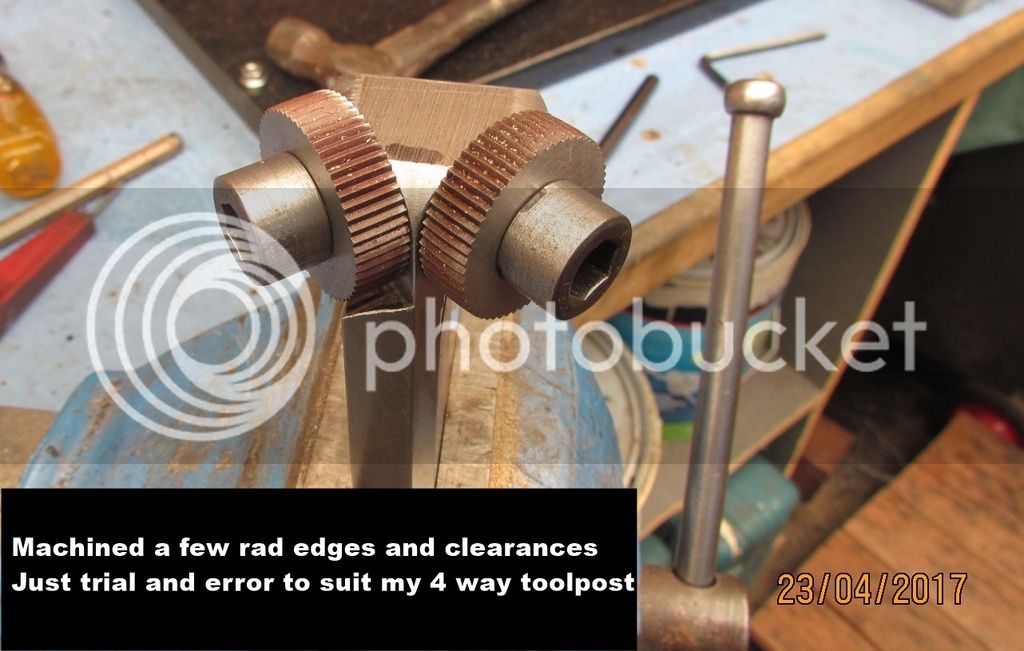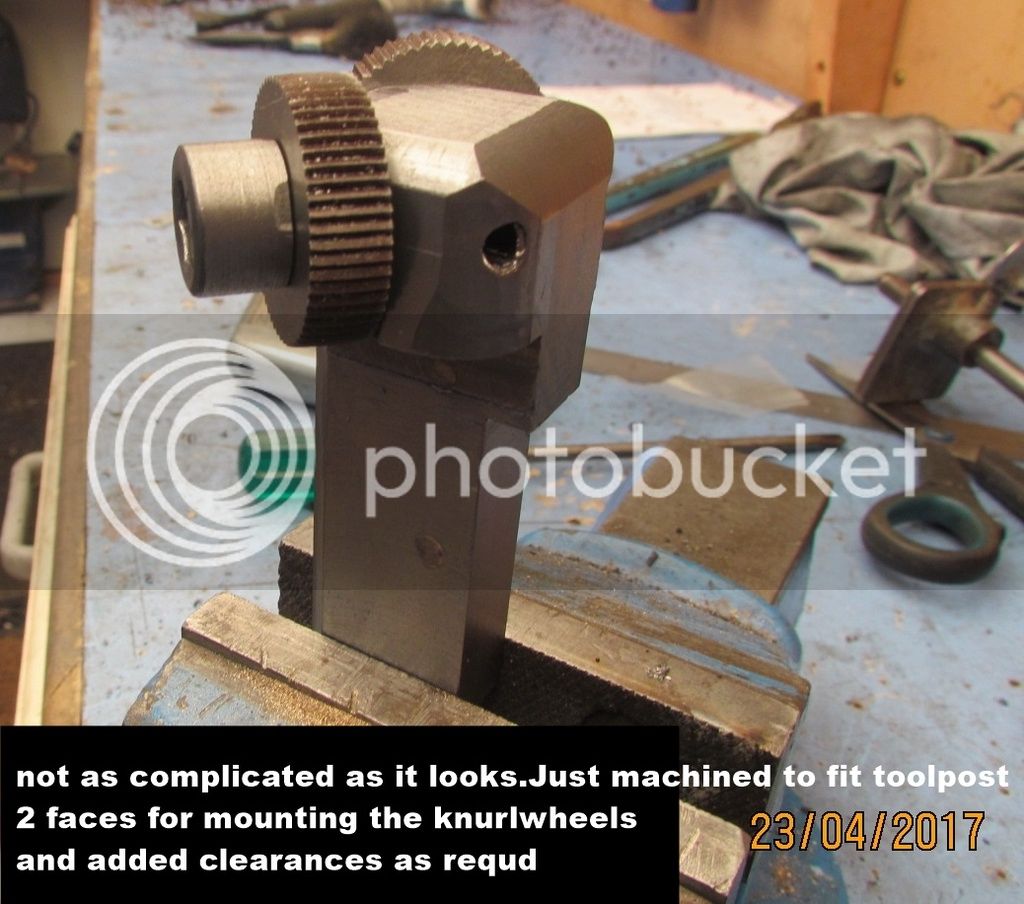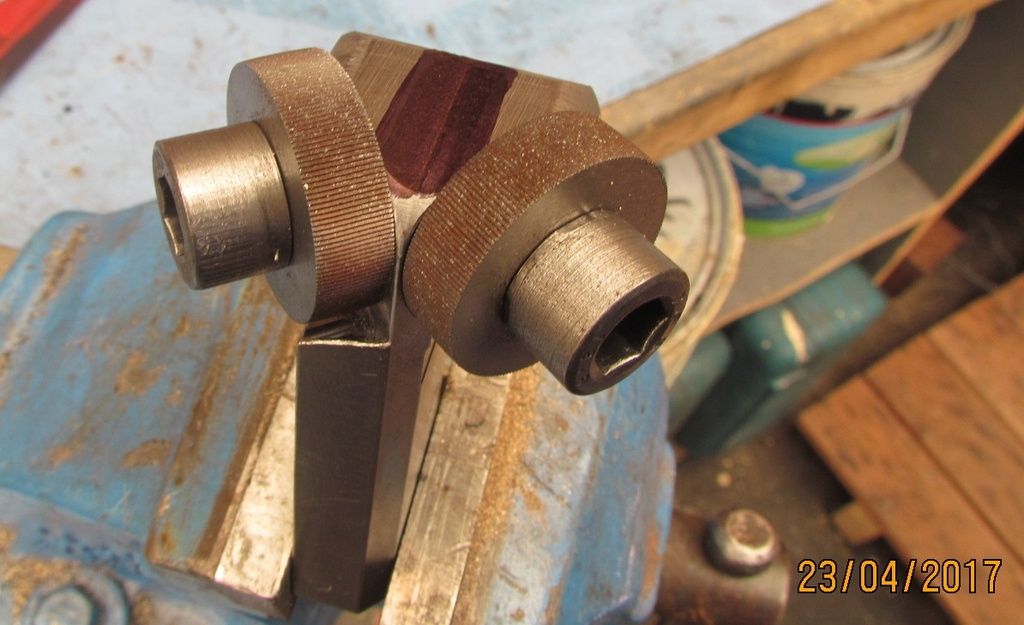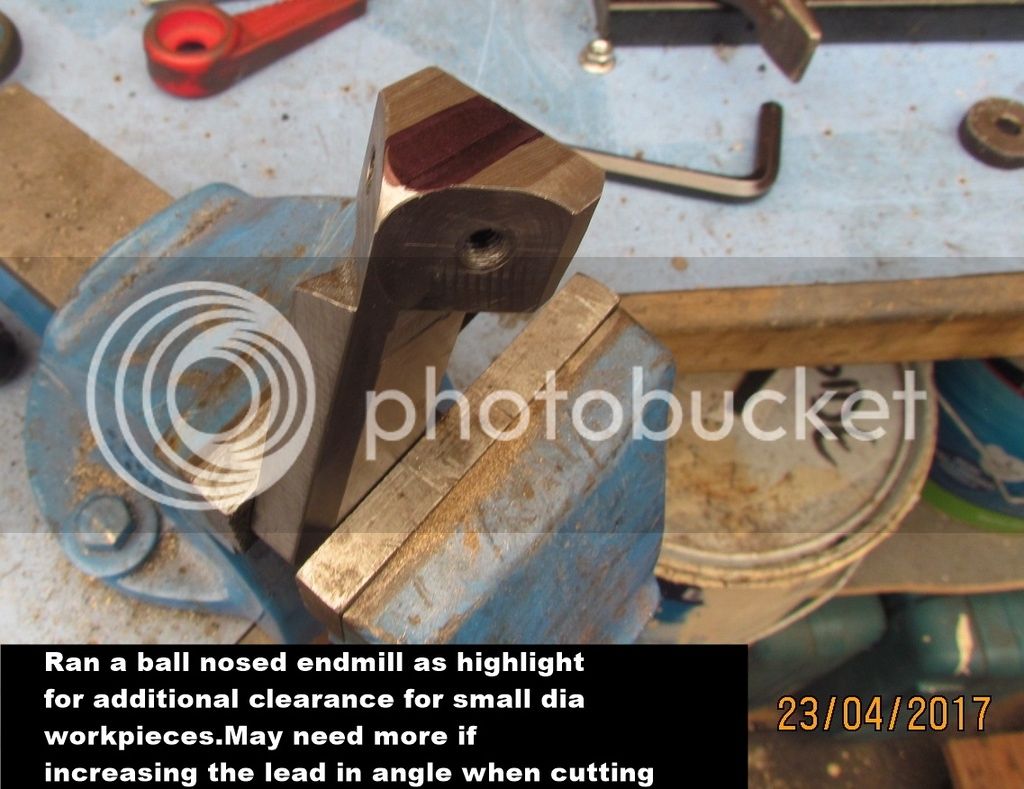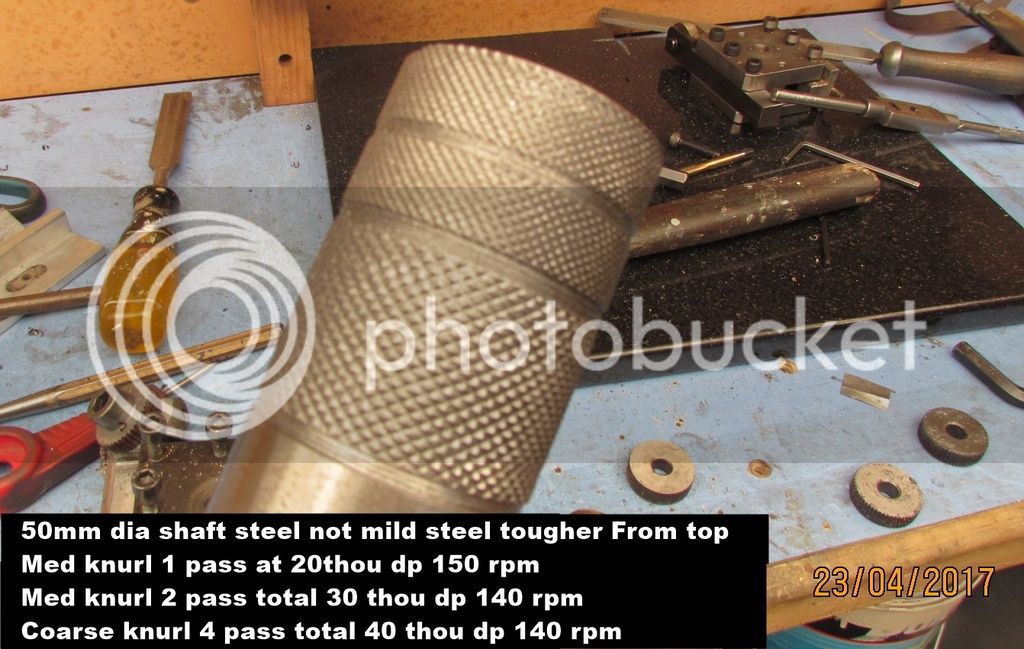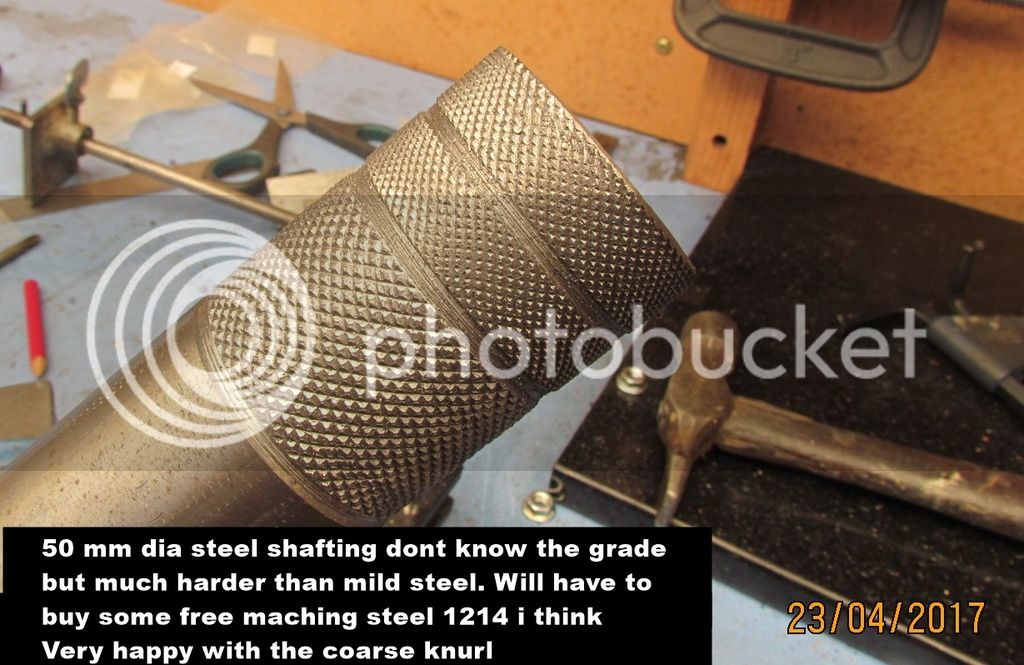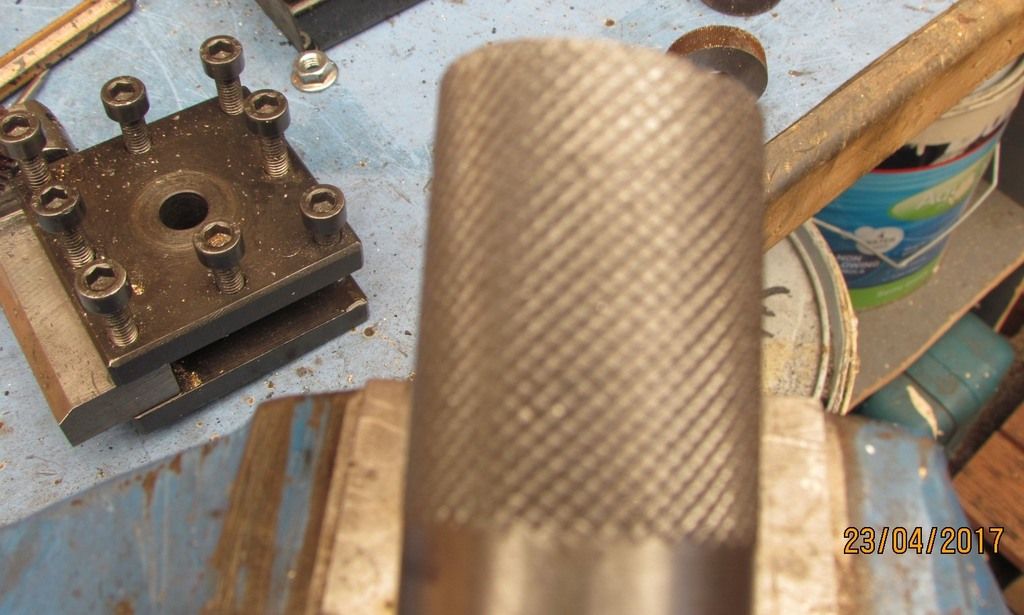- Joined
- Dec 12, 2012
- Messages
- 2,220
- Reaction score
- 1,288
I bought a typical 2 wheel knurling tool and it does not work
satisfactory + it puts too much strain on the lathe
I would like to use the knurls and make a scissor style tool
Plenty of photos and kits online. but no dims/details
Anyone have one who can let me have basic dims i can nudge to suit
and make a start.I want to make this so i can the make a couple of toolmakers clamps,which i made 55yrs ago and the design hasn't changed Regards Barry
satisfactory + it puts too much strain on the lathe
I would like to use the knurls and make a scissor style tool
Plenty of photos and kits online. but no dims/details
Anyone have one who can let me have basic dims i can nudge to suit
and make a start.I want to make this so i can the make a couple of toolmakers clamps,which i made 55yrs ago and the design hasn't changed Regards Barry
































































